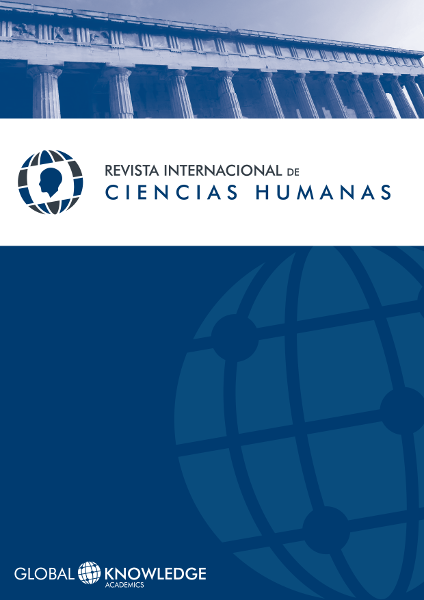Zorrilla and the Moor of Victor Hugo
DOI:
https://doi.org/10.37467/gka-revhuman.v1.665Keywords:
The Moore, Zorrilla, Poetry, Victor HugoAbstract
José Zorrilla's Moor is distinct from other Moors in literature that are considered to be more conventional. Critics like Narciso Alonso Cortés have noted that other Romantic authors of the same period created Moors that appeared to be more like "puppets." By contrast, Zorrilla's Moor, inspired by the characters of Victor Hugo, was always a man of flesh and blood who corresponded to his surrounding reality. In Zorrilla's Orientales (1837) one finds the true traces of Arabic Spain. Through a verbal magic, the poet has created a fantastic world while perfectly depicting characters full of color, life and passion. Zorrilla was a very skilled observer and so when he discovered something noteworthy, he wrote about the towns, characters and customs of Grenadine Spain. His Orientales contain not only exoticism, but the main characteristics of his first Moors. In this study, I examine the development of the typical Moor of Zorrilla beginning with his first appearance in Oriental (de los gomeles). The Moorish man desires to possess the Christian girl that he intends to kidnap while guarding his masculine pride. This characteristic distinguishes him from another type of Moor who considers himself to be the slave of the Christian woman in Dueña de la negra toca.
References
Fuentes primarias
Albouy, P. (ed.) (1964). “Prólogo al edición de 1829 de Víctor Hugo.” En Les Orientales, Les Feuilles d’automne París: Éditions Gallimard.
Alonso Cortés, N. (1943). Zorrilla: Su vida y sus obras. Valladolid: Librería Santarén.
Carrasco Urgoiti, M. S. (1956). “A propósito de El moro de Granada en la literatura (del siglo XV al XX).” Madrid. Revista de Occidente , 227-440.
Hugo,V. (1929). Les Orientales, Les Feuilles d’automne . (Ed.) P. Albouy. París: Éditions Gallimard, 1964.
Marín, D. (1968). Literatura Española. Nueva York: University of Toronto.
Sánchez, J. (ed.) (1949). “José Zorrilla (1817-1893).” En Nineteenth Century Spanish Verse . Nueva York: Appleton-Century-Crofts. 103-141.
Robb, G. (1997). Victor Hugo. Nueva York: W.W. Norton & Company.
Webliografia
Colmeiro, J. F. (2002). “Exorcising Exoticism: ‘Carmen’ and the Construction of Oriental Spain”. Comparative Literature 54, Núm. 2, 127-144. Duke UP. JSTOR Web. 7 enero 2012.
García Castañeda, S. (1984) “Trayectoria del romanticismo español. Desde la Ilustración hasta Bécquer,” por R. P. Sebold. Revisión por Hispanic Review 52, Núm. 4, 541-544. University of Pennsylvania. JSTOR Web. 15 enero 2012.
Gies, D.T. (1981). “The Plurality of Spanish Romanticisms”. Revisión de “Los orígenes del romanticismo reaccionario en España: El matrimonio Böhl de Faber by Guillermo Carnero; La gaditana Frasquita Larrea, primera romántica española by AntonioOrozco Acuaviva.” Hispanic Review 49, Núm. 4, 427-442. University of Pennsylvania. JSTOR Web. 13 enero 2012.
Grant, R. (1979). “Sequence and Theme in Victor Hugo's Les Orientales”. PMLA 94, Núm.5, 894-908. MLA. JSTOR Web. 2 enero 2012.
Havens, G.R. (1940). “Romanticism in France”. PMLA 55, Núm. 1, 10-20. MLA. JSTOR Web, 14 enero 2012.
Lida de Malkiel, M. R. (1960). “El moro en las letras castellanas”. Hispanic Review 28, Núm. 4, 350-358. University of Pennsylvania. JSTOR Web 16 enero 2012.
Parker, A. y Peers, A. E. (1933). “The Influence of Victor Hugo on Spanish Poetry and Prose Fiction”. The Modern Language Review 28, Núm. 1, 50-61. Modern Humanities Research Association. JSTOR Web 14 enero 2012.
Downloads
Published
How to Cite
Issue
Section
License
Those authors who publish in this journal accept the following terms:
- Authors will keep the moral right of the work and they will transfer the commercial rights.
- After 1 year from publication, the work shall thereafter be open access online on our website, but will retain copyright.
- In the event that the authors wish to assign an Creative Commons (CC) license, they may request it by writing to publishing@eagora.org









